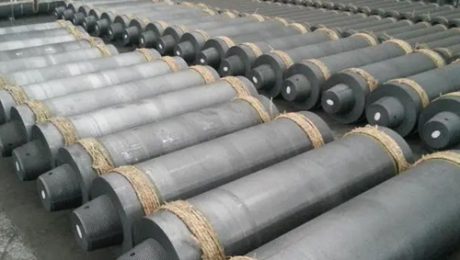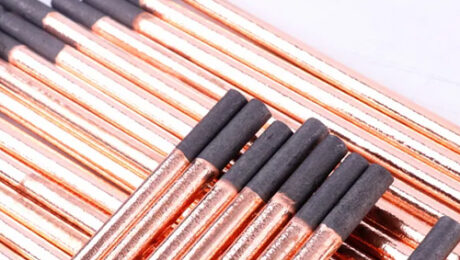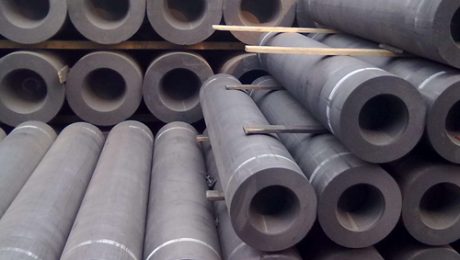Introduction to the role of high power graphic electrodes
Monday, 20 January 2025
High power graphic electrodes have the following important functions: 1、 The key role in electric arc furnace steelmaking Conductive function High power graphite electrodes are key conductive components in the steelmaking process of electric arc furnaces. In an electric arc furnace, current is conducted through graphite electrodes to generate an arc between the electrode end
- Published in blogs
No Comments
What is the function of Graphite Electrodes?
Monday, 13 January 2025
Graphite Electrodes play a crucial role in multiple industrial fields. In the process of electric arc furnace steelmaking, graphite electrodes are key components. When an arc is generated between the electrode and the furnace charge, a huge amount of heat is released, and the temperature can reach thousands of degrees Celsius. This high heat can
- Published in blogs
Introduction to the Manufacturing Process of Copper Plated Carbon Rods
Wednesday, 08 January 2025
The manufacturing process of copper plated carbon rods mainly includes the following steps: 1. Surface pretreatment of carbon rod Before copper plating, the surface of the carbon rod needs to be finely treated to remove impurities, oil stains, etc., to ensure a tight bond between the copper layer and the carbon rod. The common
- Published in blogs
The impact of Graphite electrodes on the quality of steel products
Monday, 30 December 2024
Graphite electrodes play a crucial role in the production of high-quality steel products. These are widely used in electric arc furnaces (EAF) for steelmaking due to their excellent thermal conductivity and high strength under high temperatures. The graphite electrodes act as conductors of electricity, allowing for the melting of scrap metal and chemical reactions that
- Published in blogs
Ray group wishes you a happy Christmas
Wednesday, 25 December 2024
Christmas is a magical and warm holiday, let’s share this joy and happiness together. On this special day, may your families reunite and share beautiful moments together. Whether it’s laughter, blessings, gifts, or delicious food, they all make us feel the unique charm of this festival. On the occasion of this Christmas, let us be
- Published in blogs
Why Graphite electrodes Products Have Been Widely Used?
Monday, 23 December 2024
Graphite electrodes have found extensive applications due to several key reasons. Firstly, graphite exhibits excellent electrical conductivity. It allows for efficient transmission of electricity, which is crucial in various industrial processes such as electric arc furnaces used in steelmaking. In these furnaces, the high electrical conductivity of graphite electrodes enables the generation of intense heat
- Published in blogs





